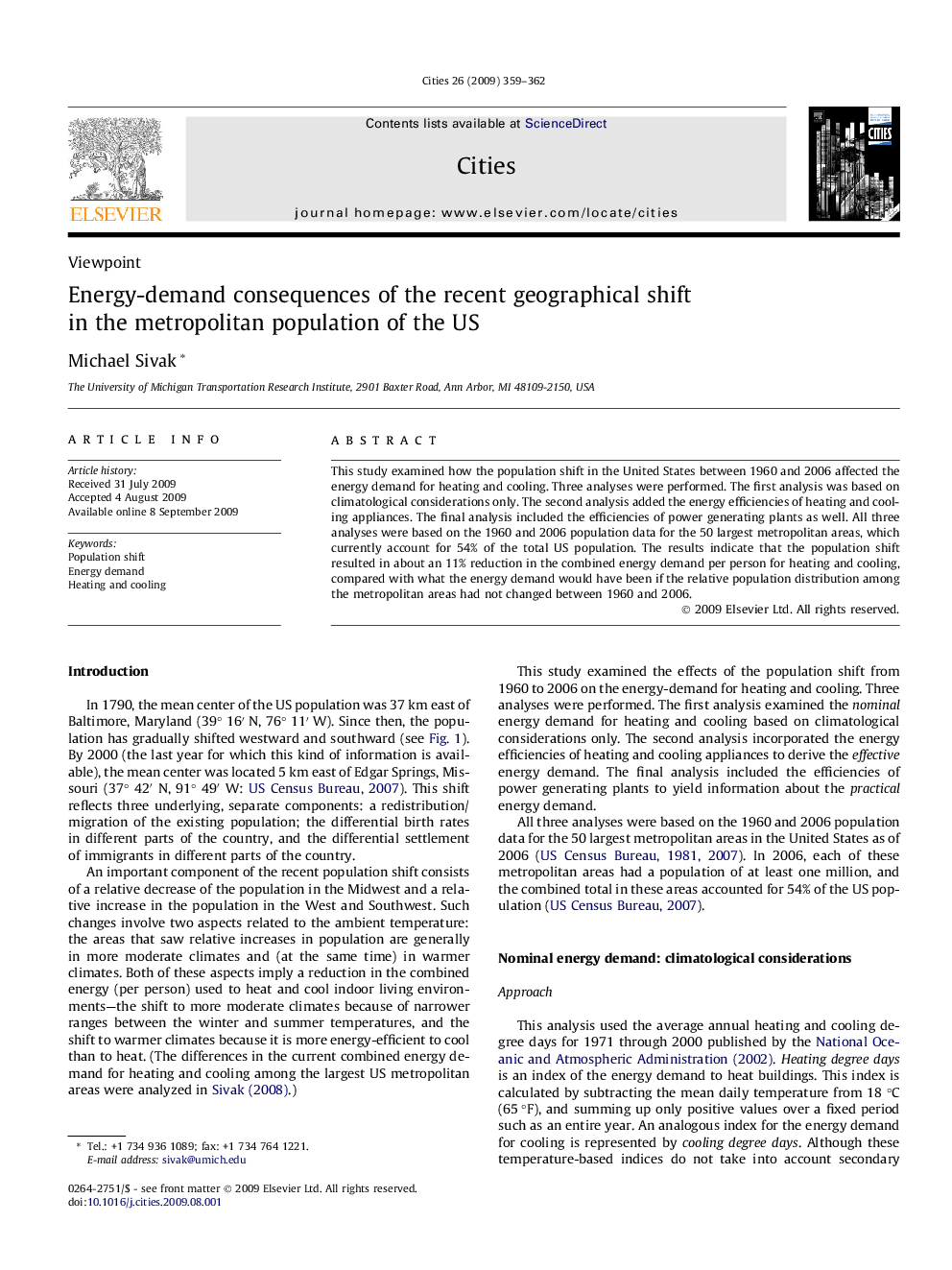| Article ID | Journal | Published Year | Pages | File Type |
|---|---|---|---|---|
| 1008821 | Cities | 2009 | 4 Pages |
This study examined how the population shift in the United States between 1960 and 2006 affected the energy demand for heating and cooling. Three analyses were performed. The first analysis was based on climatological considerations only. The second analysis added the energy efficiencies of heating and cooling appliances. The final analysis included the efficiencies of power generating plants as well. All three analyses were based on the 1960 and 2006 population data for the 50 largest metropolitan areas, which currently account for 54% of the total US population. The results indicate that the population shift resulted in about an 11% reduction in the combined energy demand per person for heating and cooling, compared with what the energy demand would have been if the relative population distribution among the metropolitan areas had not changed between 1960 and 2006.
